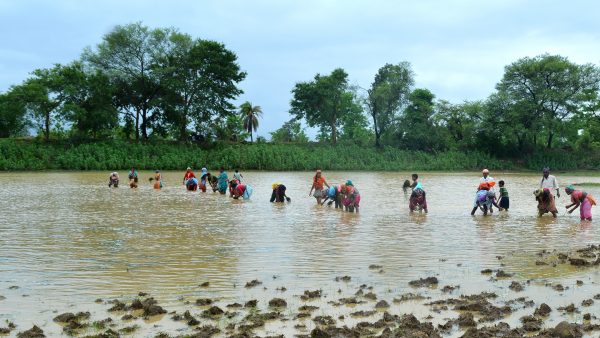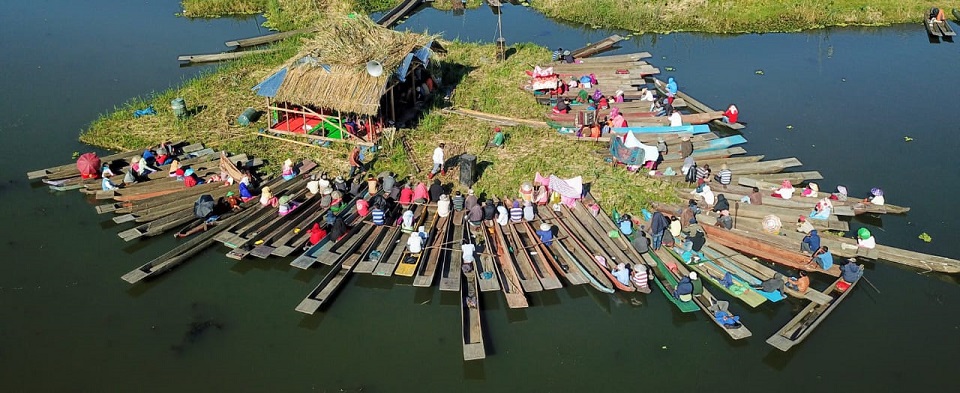First published on 09/21/2020, and last updated on 06/18/2025
The ‘Community Conserved Areas in South Asia’ webinar series puts a spotlight on Indian wetlands. In some of these aquatic territories of life, traditional fishing communities have been successful to protect biodiversity and sustain livelihoods.
By Shruti Ajit of Kalpavriksh (ICCA Consortium Member)
Organized by the Regional Coordination Committee of ICCA South Asia, the ‘Community Conserved Areas in South Asia’ webinar series aims to highlight the conservation efforts of communities in South Asia, to begin a dialogue about more inclusive and democratized conservation. The series intends to focus on various themes/ecosystems every month which had emerged during the ICCA South Asia Regional Meeting held in Udaipur in 2019. The first two webinars brought the wetlands and inland community fisheries of India into the spotlight.
Almost five percent of India’s geographical area can be considered as wetlands which support at least twenty percent of the biodiversity. Wetland ecosystems in India are so diverse that they are usually categorized into four regions: Himalayan, Indo-Gangetic, Coastal, and Deccan. There are many types of wetlands including mangroves, lakes, riverine ecosystems, and reservoirs.
Wetlands are also important resources that provide several socio-economic as well as ecological goods and services. However, rampant urbanization, developmental activities, the decline in the water quality due to water pollution and water bodies becoming dump yards of waste, excessive diversion of water for agricultural activities as well building large dams, and the impact of invasive species have been major threats to the wetlands in India. These pose risks to both the biodiversity as well as the livelihoods of the communities who depend on these resources.

Local community members plant indigenous aquatic plants for habitat restoration and conservation in Sawartola, Gondia. Photo © Mahendra Raut/ BNVSAM.
The Ministry of Environment, Forest, and Climate Change (MoEFCC) has passed new Wetland Management Rules in 2017. The law provides guidelines to the States to frame the state wetland laws. It also mentioned that the ‘wise-use’ as described under the Ramsar Convention needs to be defined under the respective State wetland rules. This effectively gives the states options to not protect wetlands even if they are declared as Ramsar sites.
Despite being signatories of the Ramsar Convention and the Convention on Biological Diversity, very little has been done in India for wetland conservation. In 2011, the National Wetland Atlas recorded up to 757,060 wetlands in India, but as of August 2020, only 37 wetlands have been recognized as Ramsar Sites.
Lack of good governance is the main challenge for wetland conservation by the state in India. And people’s efforts towards wetland conservation are also not recognized. However, there are several examples of conservation by communities who have been protecting and managing the wetlands through traditional knowledge as well as innovative interventions.
Floating villagers of Loktak lake find ways to adapt with COVID-19 restrictions
The topic of our first webinar was the ‘Fishing community in Loktak lake’. Loktak lake is in Manipur and spread over 266 square kilometres. This lake is among the thirty-seven Ramsar sites in India. The lake is also an Important Bird Area for several species, especially for the migratory birds who come from Europe and China in the winter.
The speaker of our first webinar was Salam Rajesh. Based in Manipur’s Imphal area, Mr. Rajesh is an independent researcher and communicator who works on issues of displacement of fishers and farmers in the Loktak lake area. He also facilitated community participation in wetland conservation in the region.
Mr. Rajesh presented about traditional management practices, challenges to livelihoods because of top-down conservation interventions, and the locally-led adaptation measures during COVID-19 pandemics in the Loktak lake.
For generations, communities living in the Loktak lake have been conserving this wetland ecosystem. The lake provides livelihoods for almost 30,000 people. In the lake, the village of Champu Khangpok is known as the “floating village”. In Champu Khangpok, more than 240 families live on islands made of floating biomass, traditionally known as Phumdis. The only form of sustenance for Phumids dwellers is fishing.
For the past decade, the community has been collectively working on issues that impact the ecosystem of the lake, which in turn are impacting their livelihoods. With restrictions on the movement of people and transportation to stop the spread of COVID-19, the entire country and the nearby markets have been closed. As a result, the livelihoods of people in the floating villages were severely impacted.
To adapt, the community has decided to produce fermented fish in large quantities, because it is easily storable and marketable for future use. They have also used this time to manage the lake habitat by clearing invasive weeds. A lake free from invasive weeds is best suitable for fish propagation. The fishers also planted aquatic plants like Heikak (Trapa natans) and Yelang (Polygonum barbatum), both for food and for sale in local markets.
Dhiwar women lead the rescue of Vidarbha lakes
The second webinar’s topic was ‘Wetland Conservation in Vidarbha, Maharashtra.’ Manish Rajankar of Bhandara Nisarga Va Sanskriti Abhyas Mandal (BNVSAM) and Shalu Kolhe, a community leader of the Dhiwar community were the speakers.
The Vidharba region in Western India has historically had several lakes or tanks which were used for irrigation. Mr. Rajankar and Ms. Kolhe shared their experience on how in recent times, these lakes are facing threats from invasive species and habitat degradation. They also shared the efforts of the Dhiwar fisher community towards the revival of the lakes.
Several species of Indian Major Carps (IMCs) have been introduced in the wetlands to expand fish production and farming. As part of these fisheries extension efforts, significant changes are being made to the wetland habitats to make way for the introduced carp species. Intensive fish farming has been expanded into the lakes.
Mechanical excavators are being used to remove aquatic plants. Topsoil in the wetlands and riparian areas is being removed, leading to accelerated soil leaching and erosion. Fish farms are using more and more pesticides. Consequently, perennial lakes risk to become seasonal, which leads to the deterioration of indigenous fish species.
The Dhiwar fishers in the region have collectively decided to work on lake restoration. Through careful planning and thoughtful interventions, they have managed to successfully recover these threatened wetlands. These included the removal of Ipomea fistulosa which was impacting the health of these lakes. Once the lakes were cleaned up, planting of indigenous aquatic plants was initiated and some indigenous fish species were transplanted. Over time, the community noticed that other indigenous species also migrated into the lakes through streams created during monsoon. The fishing cooperatives of the various villages have also decided to conserve some lakes specifically for indigenous fish species.
The community-led restoration of lake habitats has also paved way for women leadership from within the community. The local women are addressing various social issues related to caste and gender through their active participation in ecosystem restoration as well as local institutions.
Featured image: An aerial view of the World Wetlands Day 2018 celebration at
Champu Khangpok floating village in Loktak Lake. Photo © Deepak Shijagurumayum
